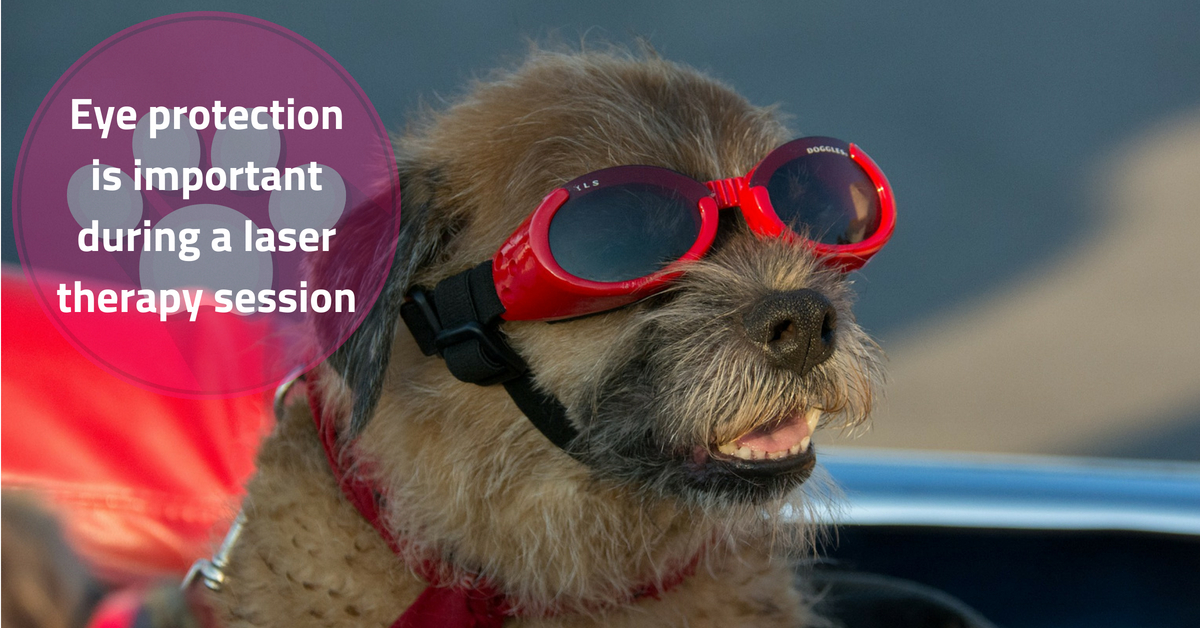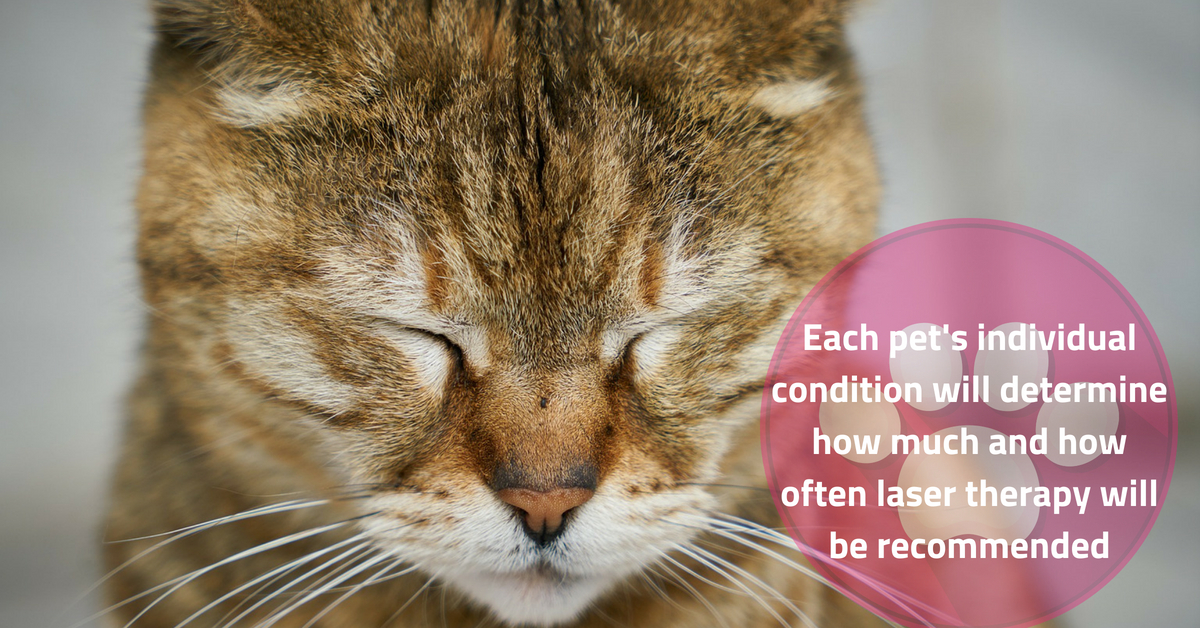Is your pet in pain?
Disease, injury, and surgery often result in painful pets and, in turn, slower recovery. Non-invasive laser therapy—also known as cold laser—provides effective pain control, allowing for more comfort and most importantly, a rapid return to health.
What is laser therapy and how does it work?
Laser therapy uses deep-penetrating light to promote a chain of chemical reactions known as photobiostimulation. This process helps relieve pain through the release of endorphins and stimulate injured cells to heal at a faster rate.
In some cases, laser therapy may reduce a pet’s need for medication. It may also be used in conjunction with pharmaceuticals or surgery for more comprehensive care.
What is laser therapy used for?
Laser therapy can safely provide pain relief and ensure a comfortable recovery from surgery.

Veterinarians use laser therapy primarily to:
-
Hasten recovery after surgery or traumatic injury
-
Ease pain and improve mobility without the use of pharmaceuticals or surgery
-
Provide relief from aches and pains, which allows for more freedom and improved quality of life
-
Treat and relieve everyday disorders like hotspots and chronic ear infections, which can cause severe pain and discomfort
Can laser therapy help my pet?
Common disorders that respond well to laser therapy include:
-
Arthritis/inflammation
-
Hip or elbow dysplasia
-
Skin conditions
-
Otitis (ear infections)
-
Wounds, lacerations, and abrasions
-
Degenerative joint disease
-
Gingivitis and periodontal disease
-
Insect bites and stings
-
Cystitis
-
Burns
-
Hotspots and lick granulomas
-
Allergies
-
Infections
-
Tooth extraction pain relief
-
Sprains, strains, and fractures
-
Post-surgical healing and pain relief
-
Inflammatory bowel disease
What can I expect at a laser therapy appointment?
Therapeutic application of the laser is delivered to the affected areas through a non-invasive hand probe.
First, your pet will be made comfortable on a soft, carpeted mat in a quiet room, and the lights will be dimmed. Eye protection will be worn by the technician operating the laser and anyone else in the room. Your pet’s eyes will be directed away from the laser.

No other preparation is necessary—the hair coat does not need to be clipped prior to treatment. To administer the laser, the operator will move the probe over the affected area for a number of minutes.
Does laser therapy hurt? What does it feel like?
As the laser is administered, your pet may feel a gentle and soothing warmth, tingling, or no sensation at all. For many pets, laser therapy is very relaxing. As areas of pain or inflammation become more comfortable, any anxiety and tension the pet may be experiencing tend to fade.
Are there any side effects?
Laser therapy is considered one of the safest treatment modalities available. There are no known side effects at this time.
How long is each treatment?
A typical treatment can last anywhere from three to eight minutes per area. The length of treatment is unique to each pet and can vary depending on the condition and the area being treated.
How often should my pet be treated? How many treatments are needed?

The answers to these questions are unique to each pet and the nature of the condition being treated.
Acute conditions, such as tooth extractions or surgery, may only require one or two treatments, while chronic problems, like arthritis, usually require ongoing care. The length between treatments for chronic conditions may be tapered as improvement is seen.
When will my pet begin to feel better?
For some conditions, a series of treatments may be necessary before results are seen; however, it is not uncommon to notice some improvement after the first treatment.
This may include reduced pain and inflammation, improved mobility, faster healing for wounds, incisions or other skin issues or simply increased comfort and relaxation.
To learn more about one type of therapeutic laser, the Companion Therapy Laser, click here. To contact us for more information about our laser therapy services or to make an appointment, please click here.

